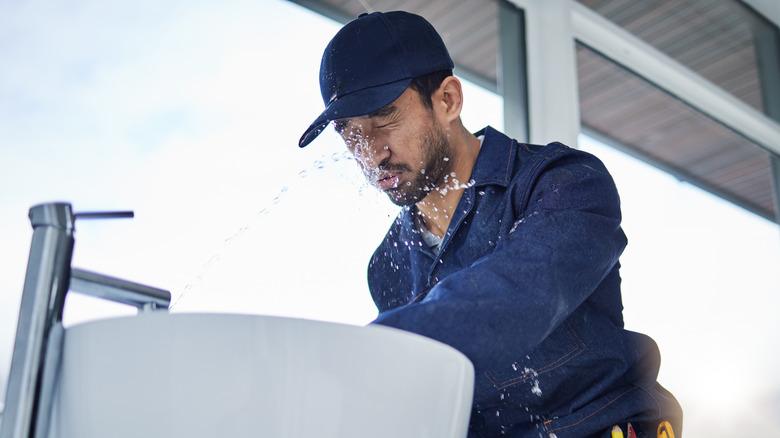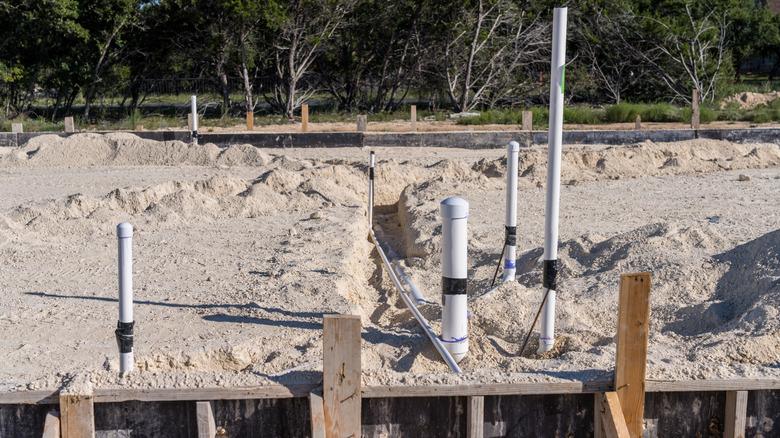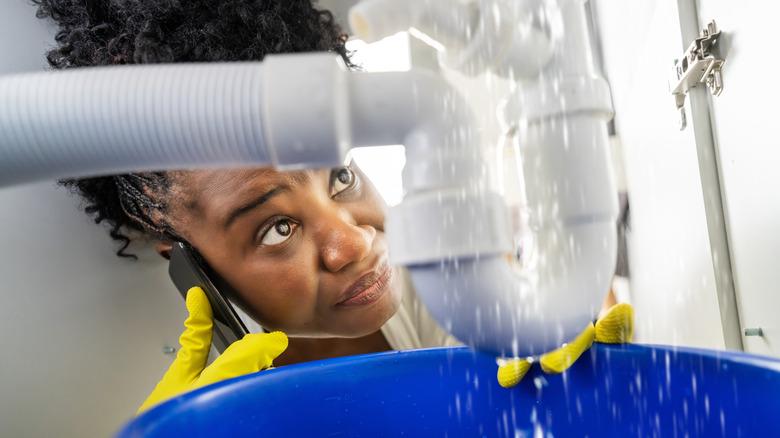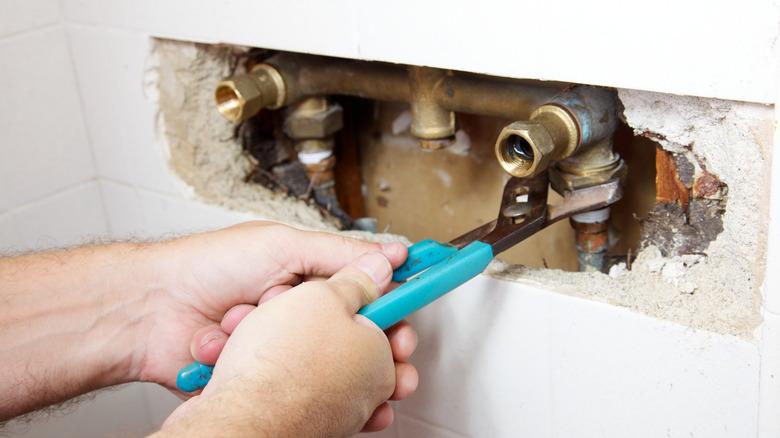I Plumbed My New House. Here's Why You Shouldn't
I have regrets. Who doesn't? But looking back on the messy process of building my own house, it stands out that my strangest tale of DIY regret was everything that involved the plumbing.
Doing the plumbing myself wasn't the plan, for the record. While I did aim to wire my own house and do many other complex tasks on my own, the original plan was to leave the plumbing rough-in to a qualified professional. When that didn't work out, I did it myself, and there are good reasons that I'm going to tell you that no, unless you're an expert, you shouldn't do that.
Every plumbing company has a page on its website called something like "The Hidden Dangers of DIY Plumbing," which mostly have all the signs of rhetorical inflation one recognizes from high school English papers: Sensing that two very valid points isn't enough, they're padded with eight more bullet points that are increasingly unlikely and silly. Now, I did pull this off, but my home's plumbing system is idiosyncratic, and the process of getting there was... tangled, to say the least. Also, my troubles and regrets actually started with my efforts to avoid DIY plumbing, and they only got murkier after my hands got wet.
Professionals really, really know the problems (and you don't) ... unless you get the wrong professional
So, let's be clear. Our story did start with hiring professionals. But we hired the wrong ones, and that's just one reason I'd suggest that you (1) go with proven contractors, (2) check a contractor's references, and (3) don't try to go at this yourself.
Back when this all went down, my wife and I hired a former city inspector and licensed plumber to do the rough-in. After he got paid, he couldn't be reached. His disappearance was probably a good thing: In the very little work he did do, he left off the tub's P-trap and didn't include any vents anywhere. This left the tub drain acting as the de facto vent for the toilet. It was... well, a scent of things to come. Next came a newly-certified septic installer we hired. This was his first solo installation. Within months, the hose clamp he used to position the pump tank's float switch corroded and failed. Over time, I realized the juncture of the pump tank and its outlet pipe was admitting water because the pipes hadn't been properly connected to the septic tank. The manhole-sized inspection port lid, through which he'd run the pump wiring without sealing around it, leaked as well. The end result is that in winter, the leaky pump tank exited the concrete lid of the distribution box... and flowed down the gravel road on which we live.
The real lesson here is about the complexity of the problems that arose. It took months of digging, diagramming, talking to the county inspector, and staring blankly at the ground to unpuzzle the cause of our problems. That knowledge is the value of hiring an experienced professional — the right one.
DIY plumbing is a land of mistakes and (potentially) colossal errors
These days, my home's plumbing system is highly tailored to my needs, and one might even say it's "unusual" if we're being charitable. The oddity starts with a manifold plumbing system, or actually, a dual-manifold system. The first, smaller manifold diverts water that doesn't need to be filtered and routes it to the toilet, hose bibbs, etc. The rest then runs through a whole-house filtration system and the water heater, and arrives at the primary manifold, where it's distributed — one PEX pipe per fixture — throughout the house. On the other end, I have a gray water system installed for sinks, my dishwasher, and my washing machine, most with diverter valves that allow you to route wastewater to either the septic system or gray water system. The final piece is an intentionally undersized septic system that was probably a mistake from conception, as the prior "sewage in the driveway" example shows.
I made mistakes, for sure, once I embarked on doing it myself after the previously discussed failures with contractors. At one point, a PEX joint leaked — more a testament to the reliability of PEX than to my skill — with a very small drip from one of the cold water supply lines feeding the kitchen sink, caused by a crimp ring positioned too far from the fitting. This is an easy mistake to make when using a manual crimper while your body is contorted underneath a sink, in a crawl space, and so on... but obviously I didn't realize that until after the problem had occurred.
And the problems only grew from there.
When it comes to DIY plumbing, gray water is an area of gray you might prefer avoiding
Our gray water system uses diverters at any drain that might handle stuff that isn't gray water friendly. This included the washing machine and a utility sink in the laundry room. Let me add to this puzzle by explaining that, at the time I was doing all this plumbing, we had a baby that we were cloth-diapering.
The 2-inch diverter valves, designed for swimming pools, require a surprising amount of force to use. Residential under-sink wastewater pipes are joined together by a dastardly amalgam of slip joints, compressed rubber washers, and optimism. The stress from yanking on the diverter valve would occasionally dislodge the joints enough to cause a leak. I now consider this mixing of PVC and tubular drain components under such forces a mistake, and will eventually re-plumb them with PVC only (or remove the diverters altogether, and only use the gray-water plumbing, now that diapers are out of the picture).
My wife has an understandable aversion to buckled flooring and mold, and rightly encouraged me to free up time in my schedule to do things I was better at. Ultimately, though, the problems were about inexperience. You can't anticipate some issues without having either experienced them, or having such a thorough understanding of the systems involved that you can foresee trouble. Frankly, gaining such experience is better done working on someone else's home.
You can't know how your DIY plumbing disaster will fail until it does
The scent of septic gases doesn't make for a particularly relaxing bath, and you haven't had fun until you've spent the afternoon digging up a septic tank with a shovel and then spending a few hours with your head in the tank trying to figure out what was going on. I do not recommend it.
Now, if I had to plumb the whole house myself all over again — that is, knowing what I know today — I absolutely would. After going through the whole messy process, I possess quite a lot of experience, at least within the confines of my own peculiar plumbing setup. So, I'd be pretty comfortable doing it again... but really, I shouldn't have been doing any of this, including the subcontracting, in the first place.
On the other hand, if I had to go back in time, deprived of all the lessons learned, I wouldn't do it. And unless you have the experience, you probably shouldn't either. After all, this is very complicated stuff, and you still have to hire the certified septic guy even if you spend 30 hours fixing his work. Not to mention, the other plumbing work (in my county, at least) has to be inspected by either a licensed plumber or an inspector anyway ... and maybe they're more diligent when they're not the same guy. In other words, leave inexperience to the pros.




